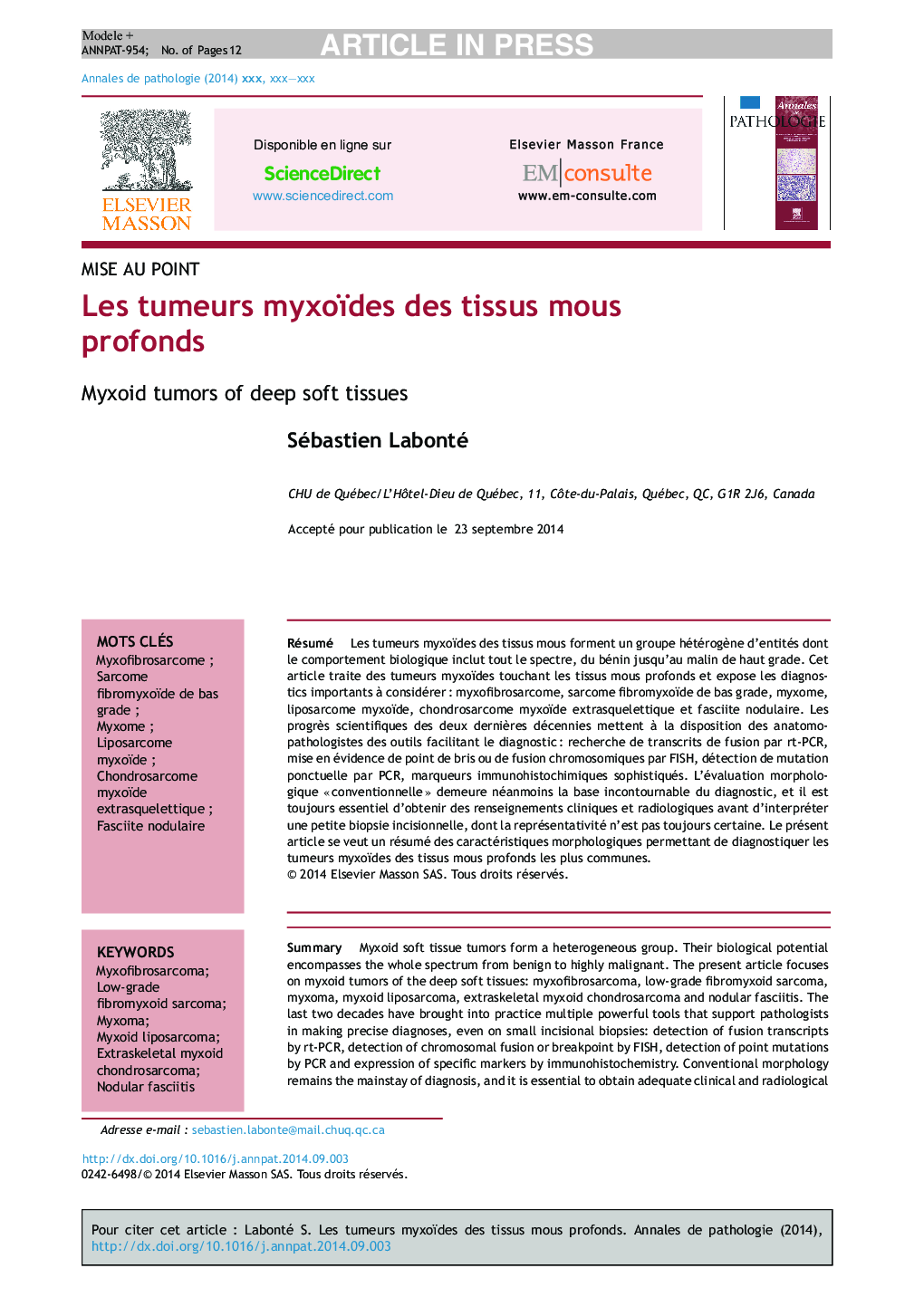| Article ID | Journal | Published Year | Pages | File Type |
|---|---|---|---|---|
| 4128088 | Annales de Pathologie | 2015 | 12 Pages |
Abstract
Myxoid soft tissue tumors form a heterogeneous group. Their biological potential encompasses the whole spectrum from benign to highly malignant. The present article focuses on myxoid tumors of the deep soft tissues: myxofibrosarcoma, low-grade fibromyxoid sarcoma, myxoma, myxoid liposarcoma, extraskeletal myxoid chondrosarcoma and nodular fasciitis. The last two decades have brought into practice multiple powerful tools that support pathologists in making precise diagnoses, even on small incisional biopsies: detection of fusion transcripts by rt-PCR, detection of chromosomal fusion or breakpoint by FISH, detection of point mutations by PCR and expression of specific markers by immunohistochemistry. Conventional morphology remains the mainstay of diagnosis, and it is essential to obtain adequate clinical and radiological information before interpreting small incisional biopsies. The present article is a summary of morphologic features used to diagnose the most common tumors of the deep soft tissues.
Keywords
Related Topics
Health Sciences
Medicine and Dentistry
Pathology and Medical Technology
Authors
Sébastien Labonté,
